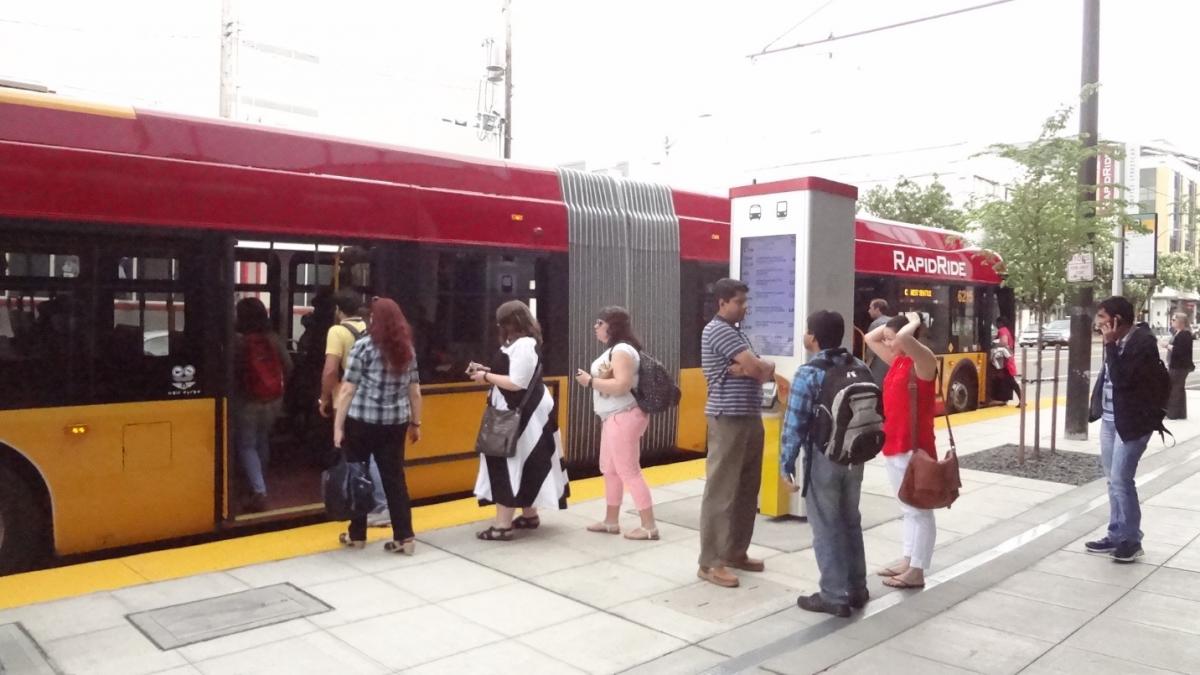Seattle Public Transit Takes Lessons from German and Swiss Systems
Tony Mazzella was selected as an Urban & Regional Policy Fellow with GMF in 2012. As part of the fellowship, Tony traveled to Munich and Zurich to research public transit systems. The resulting policy paper identified policy features and best practices from the European cities, which are relevant and have the potential to improve the public in Seattle, Washington. This year, Tony has been awarded an Ideas to Action mini-grant aimed at furthering the implementation of the research and policy recommendations made in his research.
Seattle is currently positioned to make transit investments and improvements of an unprecedented magnitude. To do this successfully the city should base its policies on the relevant insights from across the Atlantic. Public transit systems in both Munich and Zurich deliver very high-quality surface transit services including tram (or streetcar) and bus. These are high ridership workhorse systems. For example, almost 320 million passengers boarded public transit in Zurich in 2014.
Surface transit in each city was known for high frequency (short wait times) and very reliable service. They achieved these results through measures such as:
- heavy reliance on advance fare purchases and payment, which allowed riders to board through multiple doors thereby reducing the time the vehicle remained at a stop;
- dedicated lanes that eliminated getting stuck in traffic; and,
- traffic signal priority (TSP) which means that the traffic signal will always be green when the vehicles approaches the signal, and allows transit vehicles to avoid stopping unless at a stop.
Seattle transit planners were aware of these priority treatments, but they were not widely utilized in comparison to the relevant European systems. Through several professional presentations and the policy paper written after my return, I was able to advocate for a more widespread application from both within the Seattle Department of Transport and with external stakeholders, echoing similar recommendations made in the 2012 Seattle Transit Master Plan. Between 2013-16, the Seattle Department of Transportation (SDOT) and its partner agency, King County Metro, introduced off-board payment, all-door boarding, dedicated lane segments, and other priority treatments on three high ridership/frequency bus routes. These measures have significantly enhanced service quality on those routes.

In 2016 SDOT, Metro, the regional transit agency, Sound Transit, and the Downtown Seattle Association business group joined forces to begin development of a unified transportation plan for what is known as the Seattle Center City. Center City consists of downtown and nine adjacent neighborhoods and includes the fastest growing neighborhoods in the city. By 2035, an additional 56,000 jobs and 25,000 households are expected in Center City neighborhoods to expand on the 60,000 people and 250,000 jobs that exist there today.
The One Center City plan is needed not only to help manage this long-term growth but also to deal with future challenges. In 2019, an additional 160 daily peak-hour bus trips may be brought to downtown surface streets, while the Downtown Transit Tunnel is restricted to light rail trains only. In this scenario, certain streets would be saturated by bus traffic and speeds would grind almost to a halt. In short, too many buses would be trying to get through a limited amount of street space in and near downtown. Bus operations must be made more productive and efficient to meet these twin challenges. Cities on both sides of the Atlantic have shown that such improvements are possible. Seattle should capitalize on the experiences and lessons learned to achieve this successfully.

There are two related strategies being considered to improve Center City bus service: increasing the use of off-board payment and all-door bus boarding on many bus routes. Accomplishing this on a large scale will require buying new infrastructure and technology and the allocation of additional sidewalk space for controlled passenger waiting, fare purchase and payment, boarding, and alighting.
To better our understand how to design and implement these measures on a much larger scale, and build on the research in relevant European cities initiated through my fellowship, I applied and was awarded an Ideas to Action mini-grant to convene an all-day workshop to address technical, policy and fiscal challenges and draw upon transatlantic best practices.